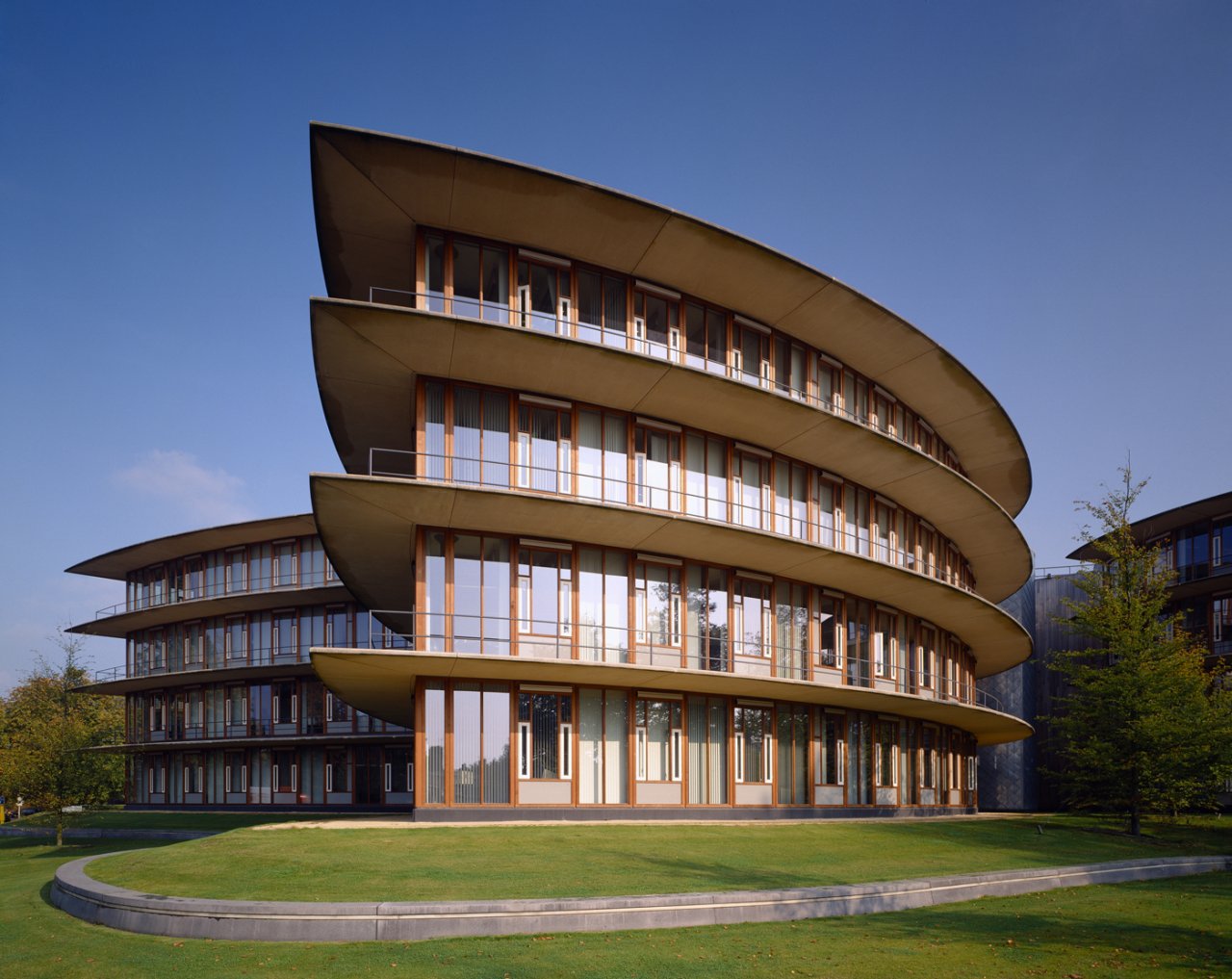
Main location Saxion University: A city in the city
Saxion Ko Wieringa
In 1993, the University of the Eastern Netherlands, which became Saxion University, decided to focus its Enschede and Hengelo courses into one place. Bordering to the inner city of Enschede, at the site of former hospital Ziekenzorg, there was space for new construction, but also for reuse. The new university building was to become an open, functional and comfortably usable building with the aura of a dynamic educational institution. It was to fit well in its surroundings and have a pleasant atmosphere, which was to be achieved by the use of colours and materials, but above all, the city and the university were to be connected.
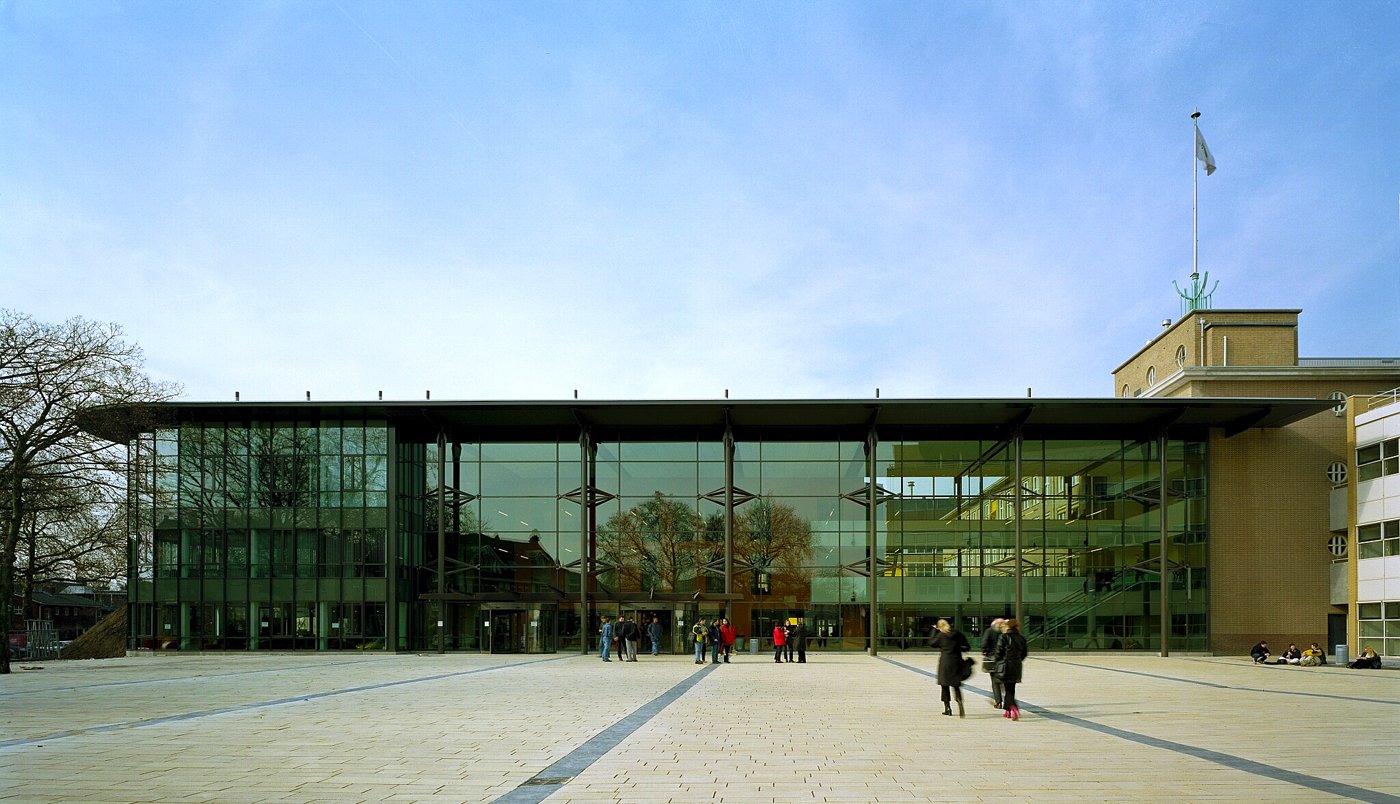
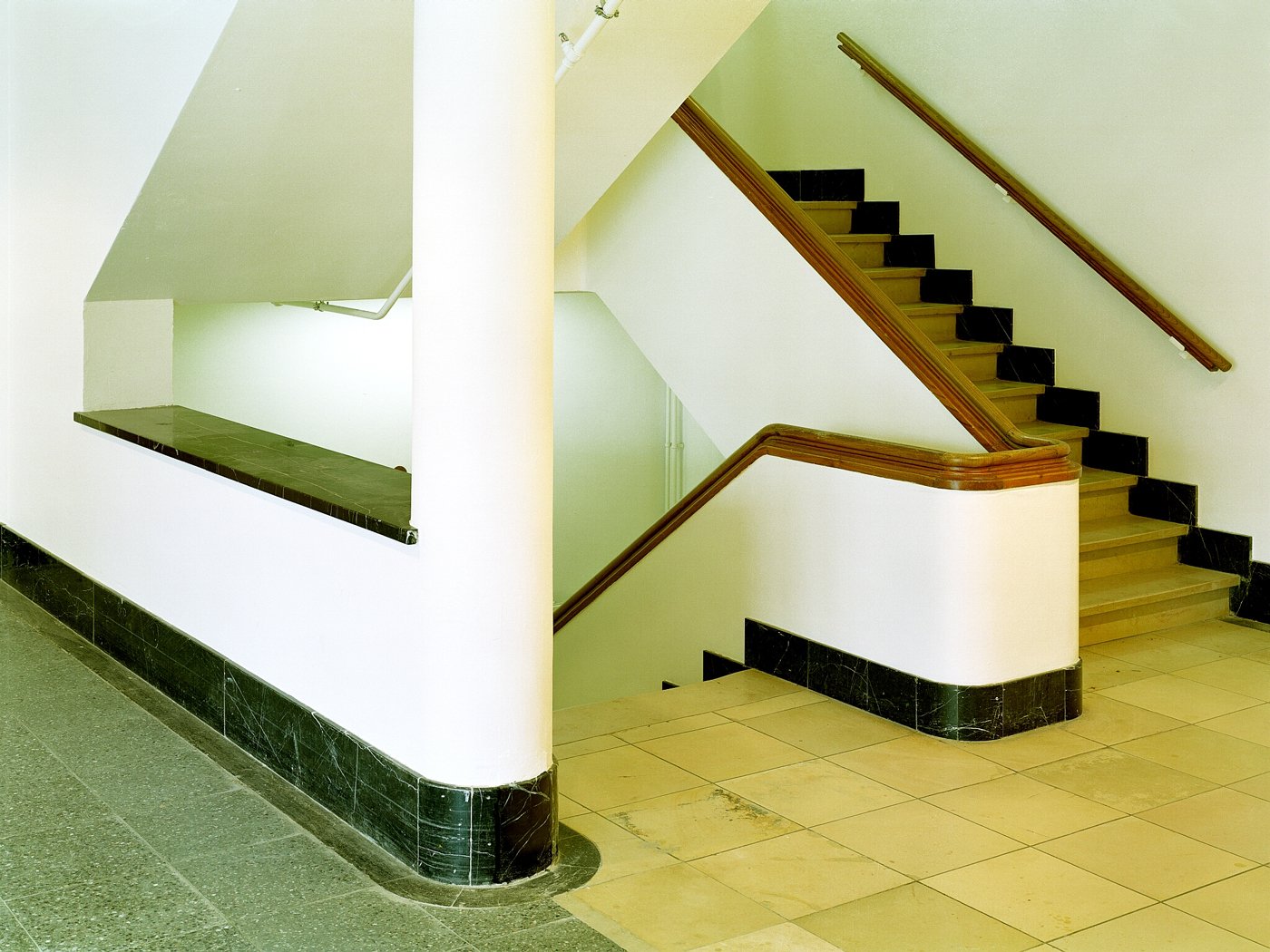
Old connected to new - The start of the city campus for the University
The University is located in former Stadsweide, one of the most sensitive places in the city: not only close to the station and the city centre but also to the Volkspark, with its monumental trees, lots of greenery and stately villas. The educational complex has been realised in different phases, starting with the construction of two wings at the Parkweg and the Ruyterlaan, in the location of a part of hospital which had become superfluous. An old building element at the top of the Tromplaan was transformed into a central entrance hall, with the new construction of the HTS right behind it. In the middle of the premises, buildings were demolished and valuable parts renovated, while other parts were newly built. On the side of the Tromplaan – Kortenaerstraat, the complex is connected to new pavilions that replaced the residential and temporary buildings of the former hospital.
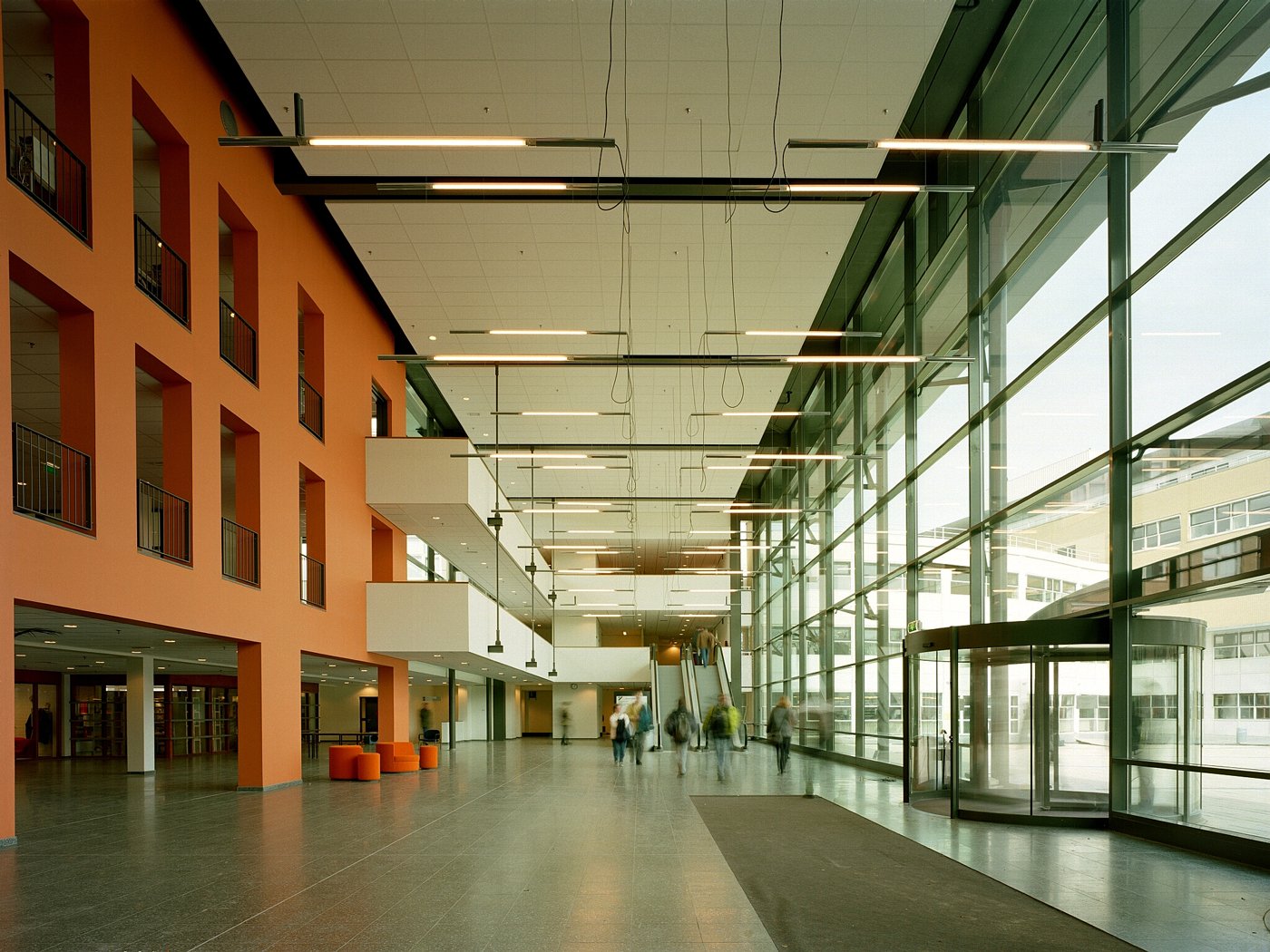
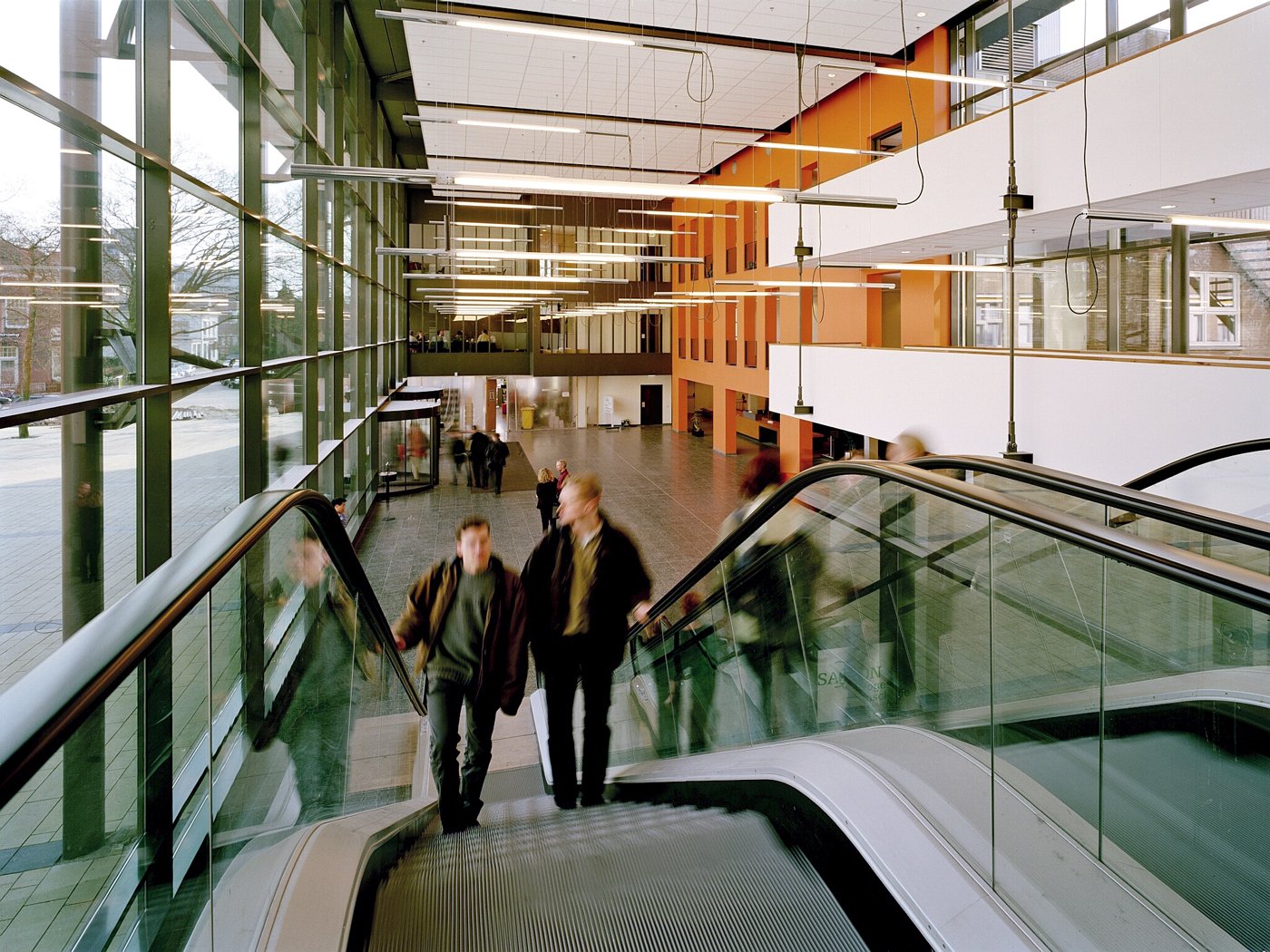
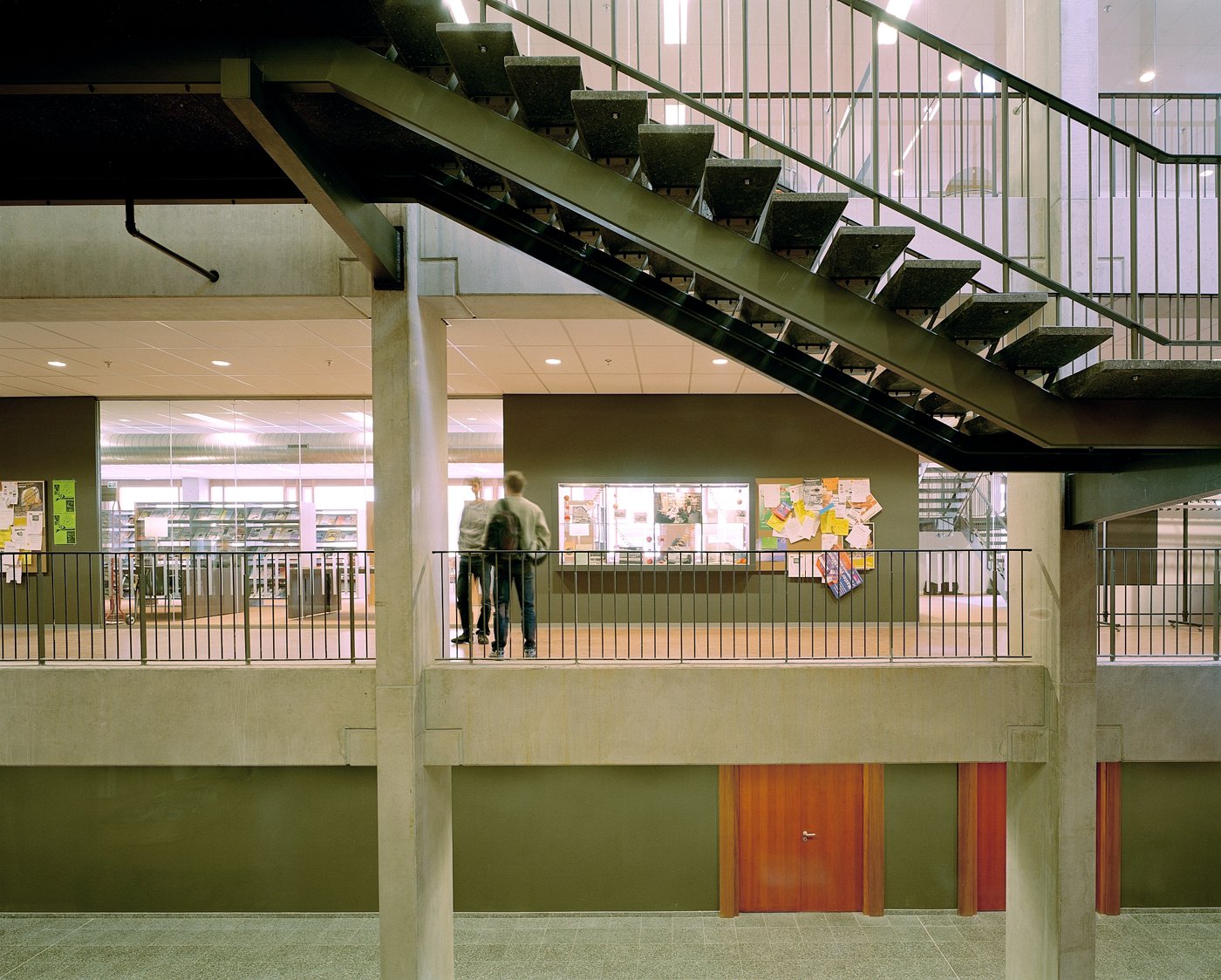
Main entrance pointing to the city
The new entrance is set back slightly from the street, which creates a public square facing the city. The 75 meter wide glass façade over three floors ensures that the urban space is continued inside and that there is always visual contact with the city from inside the building. Escalators at the transparent façade connect the large reception hall with the upper parts of the building.

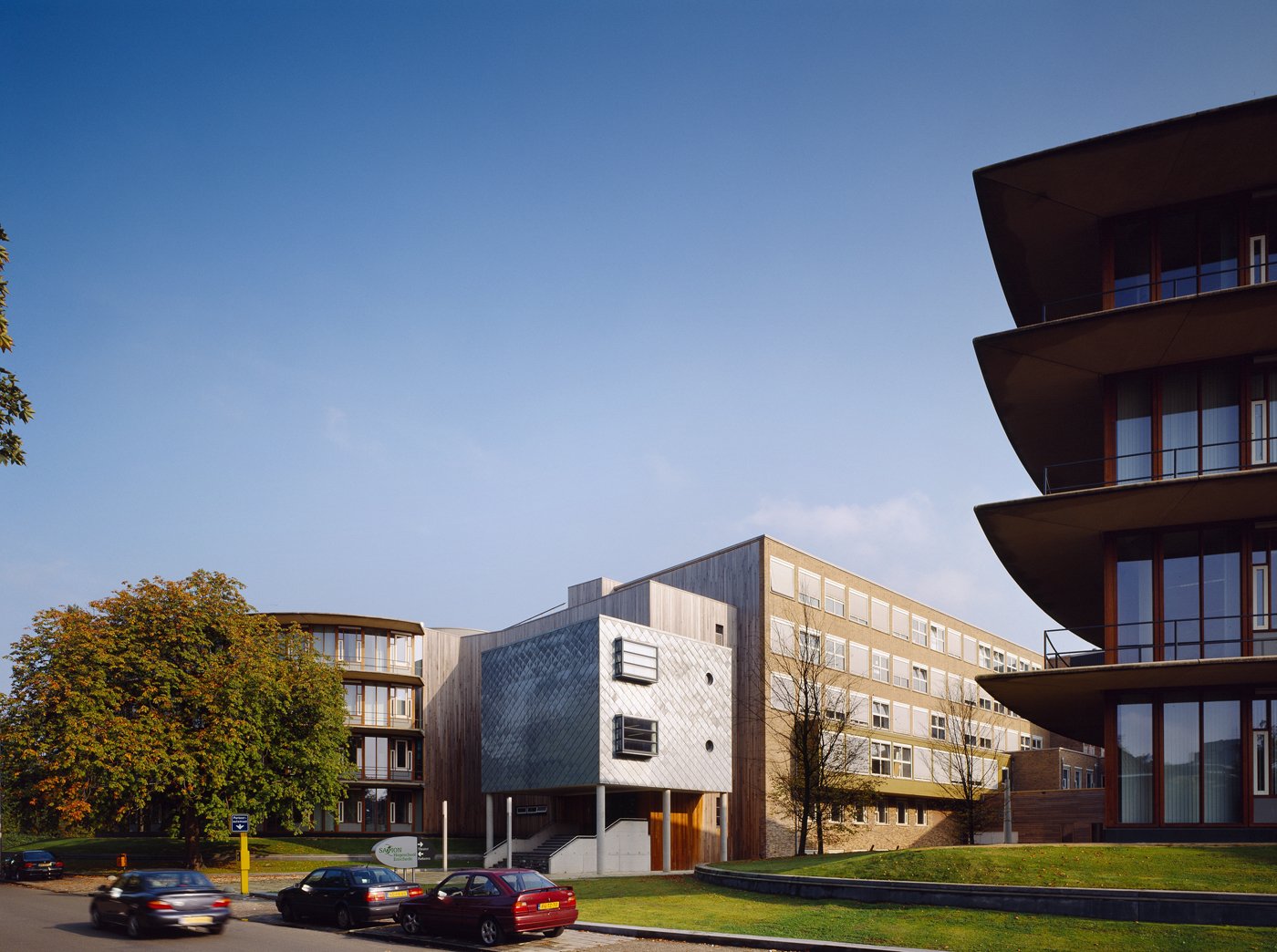
Glass pavilions in the greenery
The Tromplaan with its villas and trees acts as a 'green carpet' running from the inner city to the Volkspark. For the expansion of the University on the west side, these qualities have been utilised by opting for an architecture where the greenery penetrates deeply into the building. The new glass pavilions, which are situated on low green mounds, are shaped like stylised tulips. The rooms along the façade are freely rearrangeable and because of the particular design of the façade, each has a different view. In the centre areas of the pavilions, space has been reserved for workgroup and study rooms.
